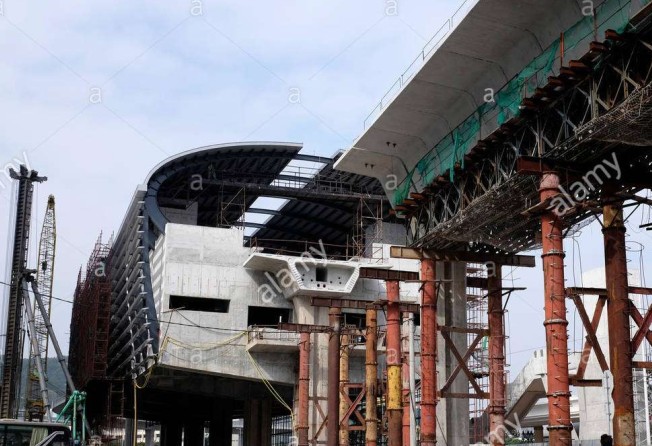Macau on track for cross-border growth with new transport links and tourism infrastructure
New road, rail, airport and cruise facilities link city to nation and world

Macau is looking at an increasingly rosy future. A mammoth new bridge is scheduled to connect the city with Zhuhai and Hong Kong by the end of this year. There is also the prospect of a light rail system easing traffic congestion; a new ferry terminal on Taipa; and a raft of new hotels planning to commence operations. There is also talk of improvements to the airport and the development of hotels and theme parks on Hengqin Island, on the mainland side of the border near Cotai.
A report by senior analyst Vitaly Umansky for Sanford C. Bernstein, an investment bank, pointed to other signs of progress in the region, such as Zhuhai’s joining China’s high-speed rail system, as being likely to have a beneficial effect on the city’s economy.
Umansky estimated that Macau’s penetration of the potential mainland market – households earning more than US$15,000 per month – is extremely low, and that better transport links would be the solution to attracting visitors from across the border.
Macau’s per-capita GDP is rated at an impressive US$98,000, and the Economist Intelligence Unit has predicted the city will experience growth in excess of 5 per cent in the coming year. Casino revenues, which are a prime source of income for the city’s coffers, are on the rise, registering an 8 per cent year-on-year increase to 19.8 billion patacas last December. Analysts have predicted a 7 per cent increase in gambling revenues this year, with mass market players leading the recovery.
Of all the changes Macau is witnessing, the Macau, Zhuhai and Hong Kong Bridge is judged to be most likely to have an immediate impact. While the 42km-long bridge may be facing cost overruns well in excess of its original HK$117 billion billing, the prospect of an improved transport network spanning the Pearl River Delta could benefit all the three cities.
Comparisons have been drawn with other major infrastructure projects around the world, such as the Chesapeake Bay Bridge Tunnel in the United States and the Øresund Bridge linking Denmark and Sweden, which both cut journey times significantly and enhanced the economic climate.
Travelling between Hong Kong and Zhuhai on the bridge is expected to take around 40 minutes, compared to the present four hours. While proposals are at an early stage to enlarge Macau’s international airport – reclaiming land and increasing the number of aircraft stands from 24 to 47 in order to cater to 15 million passengers per year – the long-awaited Pac On ferry terminal on Taipa is due to open by this summer.
Replacing the nearby, warehouse-style temporary terminal, Pac On will host three ferry companies across 16 berths and could process 400,000 visitors a day. Three multifunctional berths could host cruise ships, while the helipad has been designed to cater to up to five helicopters.
Given Macau’s population of around 650,000, and that the city is packed into a mere 30 square kilometres, traffic congestion is a daily problem, especially during peak periods, such as Golden Week, which can attract up to 1 million visitors.
The Light Rail Transit – which was first proposed in 2003 – is not due to start running until at least 2019, but it is an indication of how the city will develop, with links, in the long-term, to both the bridge and to the south of Coloane, and across to Hengqin Island via the Lotus Bridge border crossing.
Despite the massive growth, Macau is also becoming more affordable as rental prices fall, as many foreign white-collar workers leave town, according to some real estate experts.
“Initially, when hotels were being built, many expatriates, such as engineers, designers, architects, and project specialists were based here, so rents were strong,” says Suzanne Watkinson, managing director of Ambiente Properties.
“Now, much of the hotel building is complete, and expats have left in droves as their skills are no longer needed – either their jobs dried up or the government refused to renew their employment ‘blue cards’, so rents are greatly softening.
“A furnished three-bedroom unit in the popular central Taipa property, The Manhattan, in its heyday, around six years ago, would have cost HK$28,000 a month. Now it’s HK$21,000. And in Central Macau, the rent for a two-bedroom furnished apartment in One Central started at HK$15,000 when it first opened, went up to HK$28,000, and is now down to HK$20,000.”